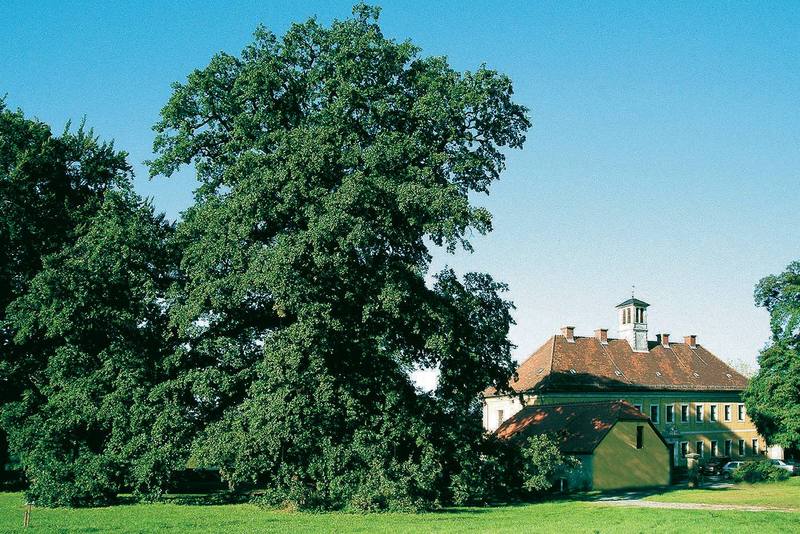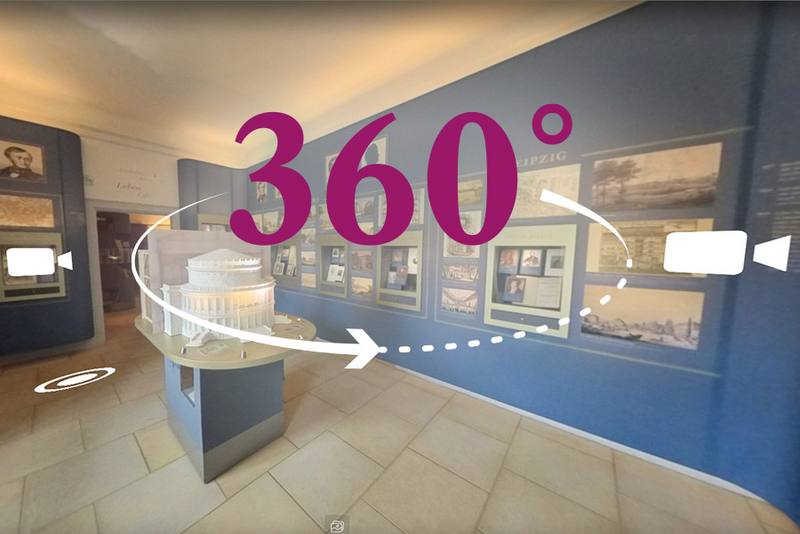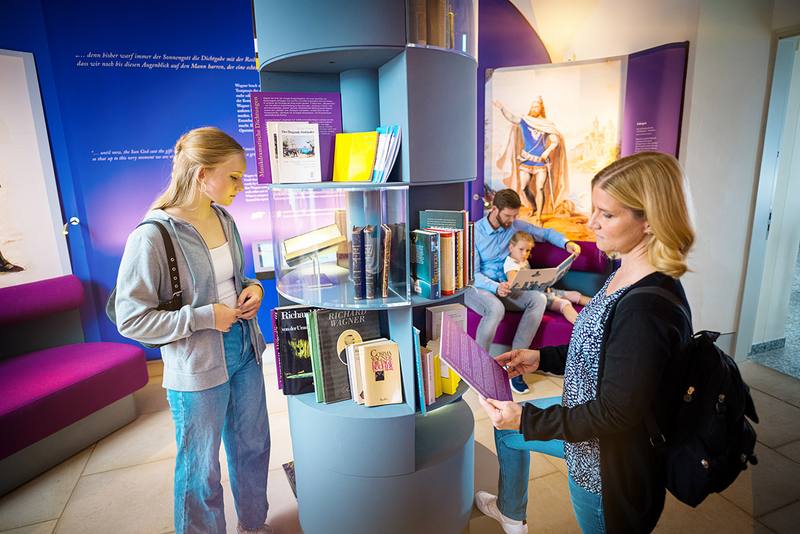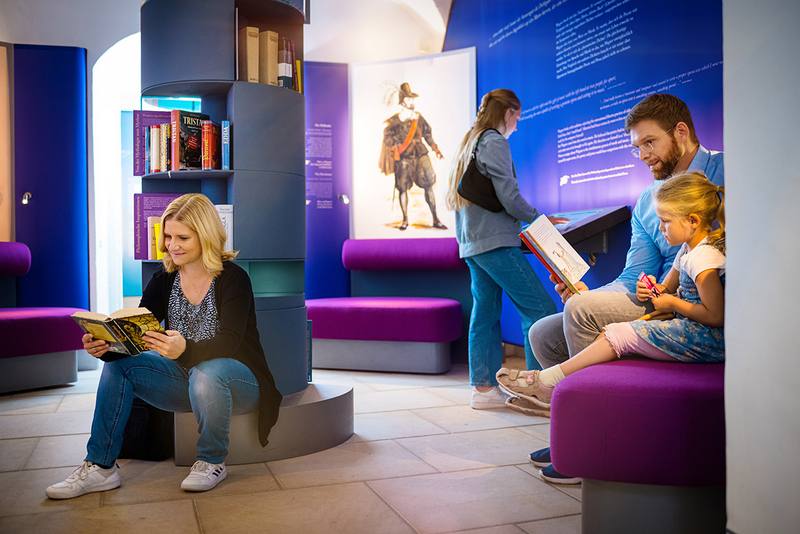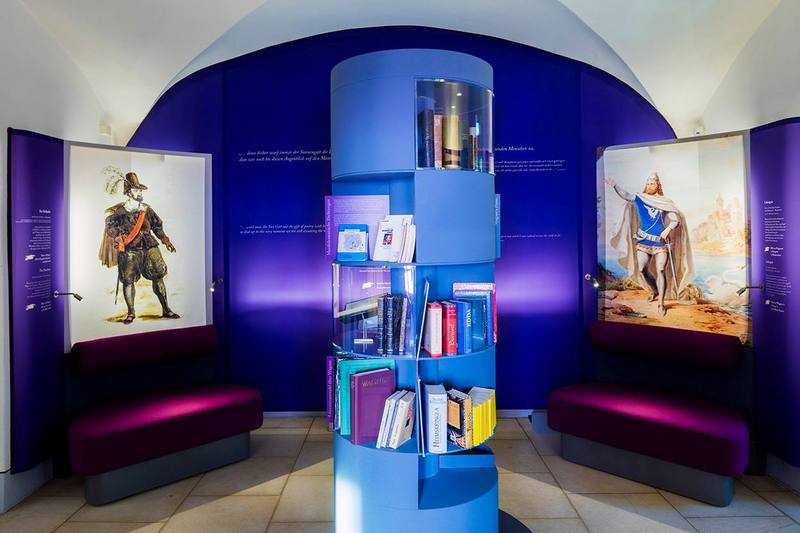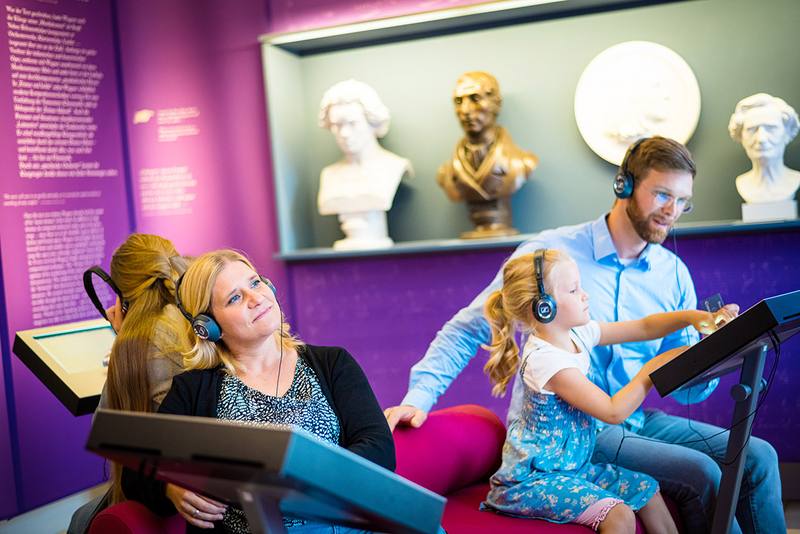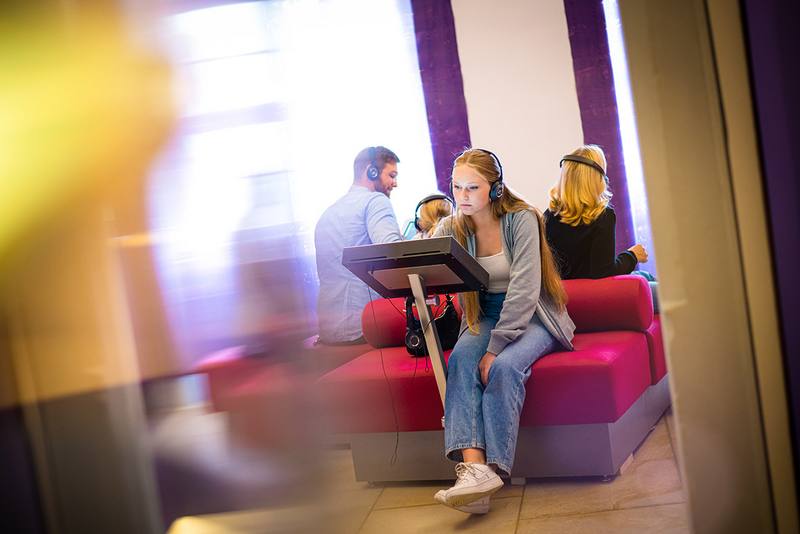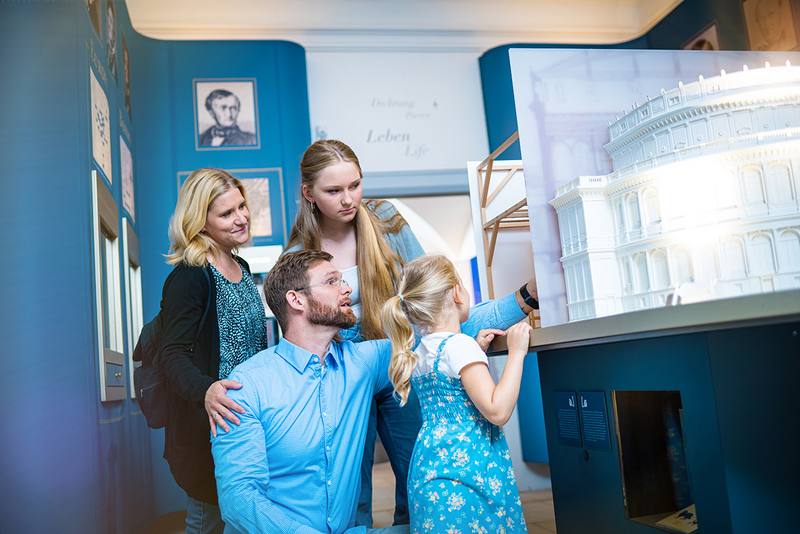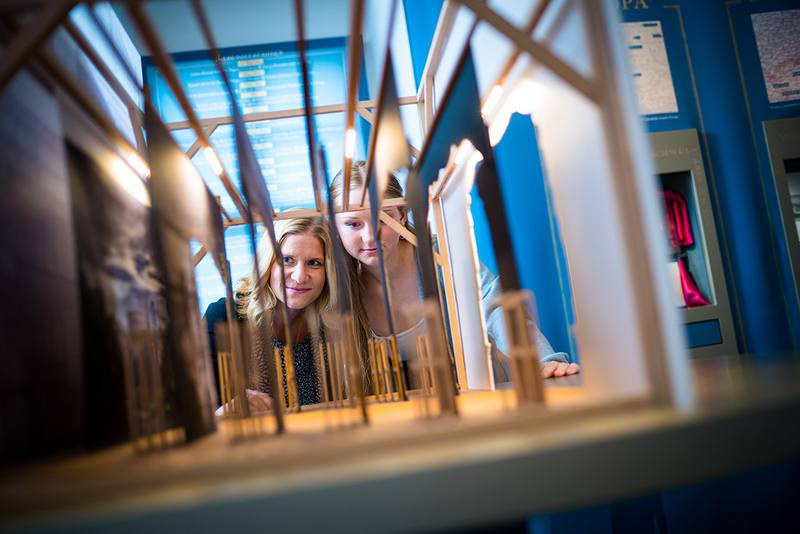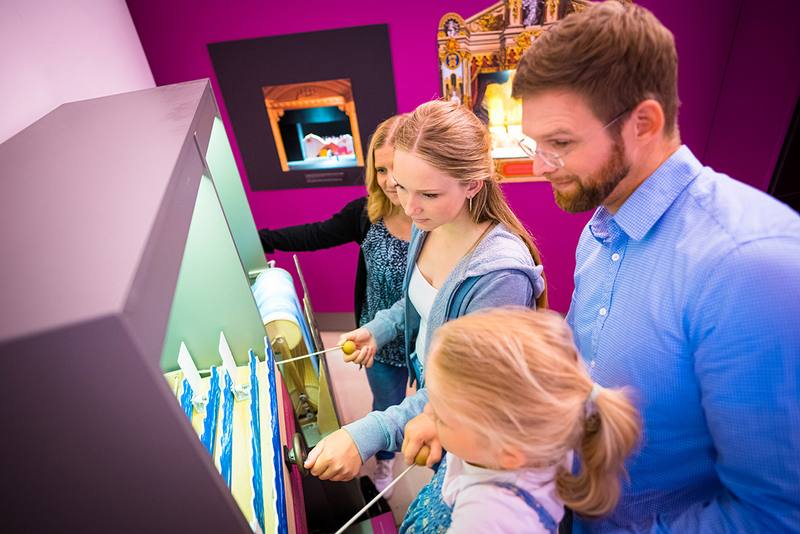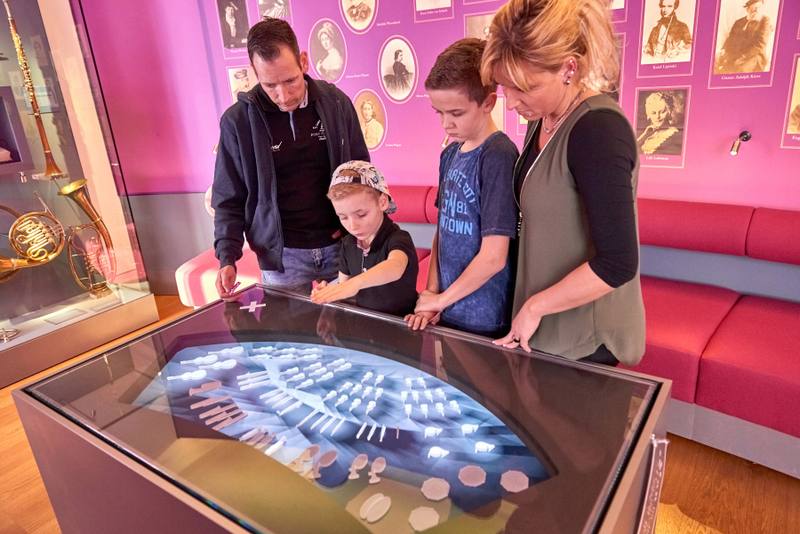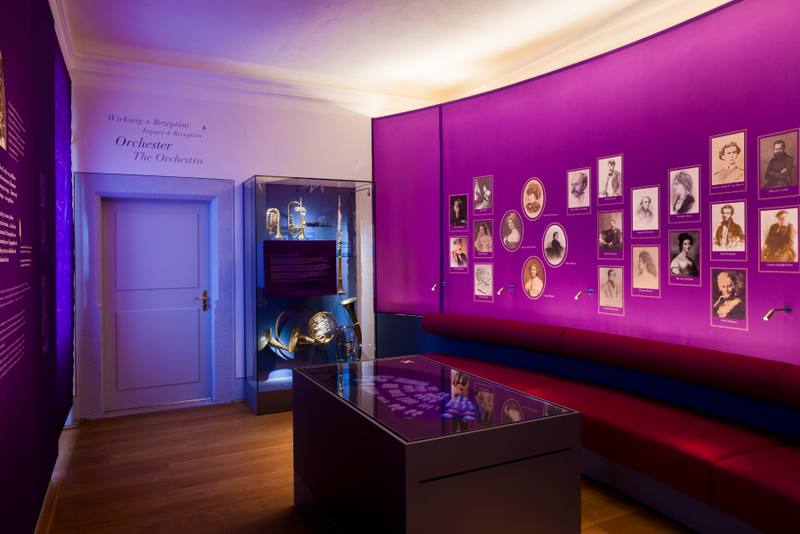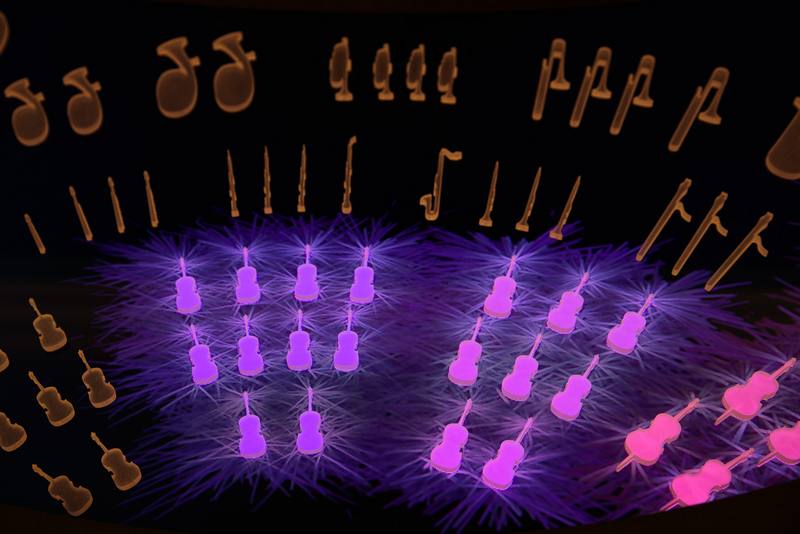Jagdschloss Graupa
Gleich beim Betreten des Jagdschlosses erklingen zur Begrüßung der Museumsgäste musikalische Sequenzen aus den Opern Richard Wagners – ein atmosphärischer Empfang, der auf den Charakter des Museums einstimmt.
Unsere stimmungsvolle Dauerausstellung im Jagdschloss Graupa
Stimmungsvoll ist auch die farbliche Gestaltung des Museums in blau-lila Farbtönen, womit darauf verwiesen wird, dass Wagner ein hochemotionaler, quirliger Theatermensch war.
Inhaltlich liegt der Schwerpunkt der Präsentation auf den sächsischen Jahren bis 1849 – Wagners Kindheit, Jugend und Schulzeit sowie seine Dresdner Kapellmeisterjahre. Schlaglichtartig werden auch spätere Lebensstationen und die Wirkung seines Werkes bis in die heutige Zeit beleuchtet.
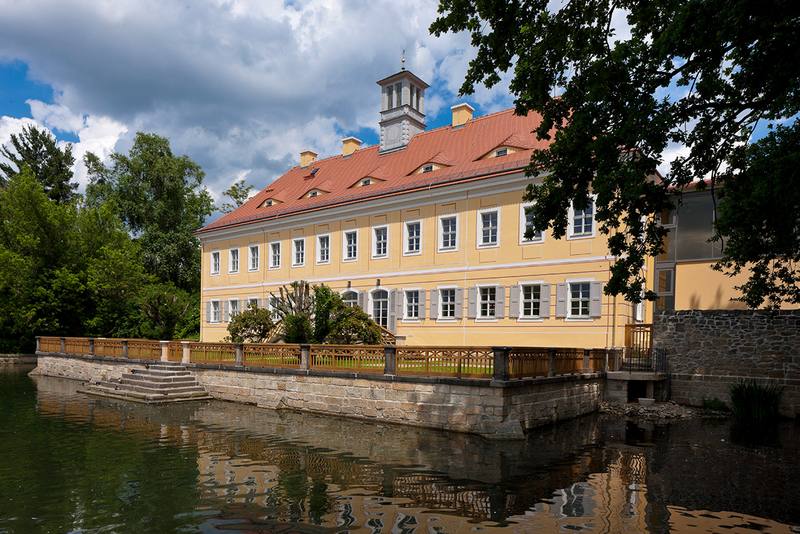
Interessante Themen zum Jagdschloss Graupa
Wagner in Sachsen
Wagner war Sachse. In Leipzig geboren, erlebte er seine Kindheit in Dresden, seine Jugend und musikalische Ausbildung in Leipzig und kehrte schließlich 1842 nach Dresden zurück. Hier wurde er Königlicher Hofkapellmeister und brachte drei seiner Opern zur Uraufführung. Die vierte wurde ihm aufgrund der Teilnahme an der Revolution 1849 versagt. Er verlässt Dresden fluchtartig, um seiner Verhaftung zu entgehen.
In Text und Bild werden relevante Themen dieses Lebensabschnittes vorgestellt, so die Familie, Lehrer, Ensemblemitglieder am Theater, revolutionäre Wegbegleiter sowie Lebens- und Wirkungsorte. Ein Modell des Königlichen Hoftheaters, ergänzt durch das Bühnenbild zu „Rienzi“, bildet das Zentrum des Raumes.
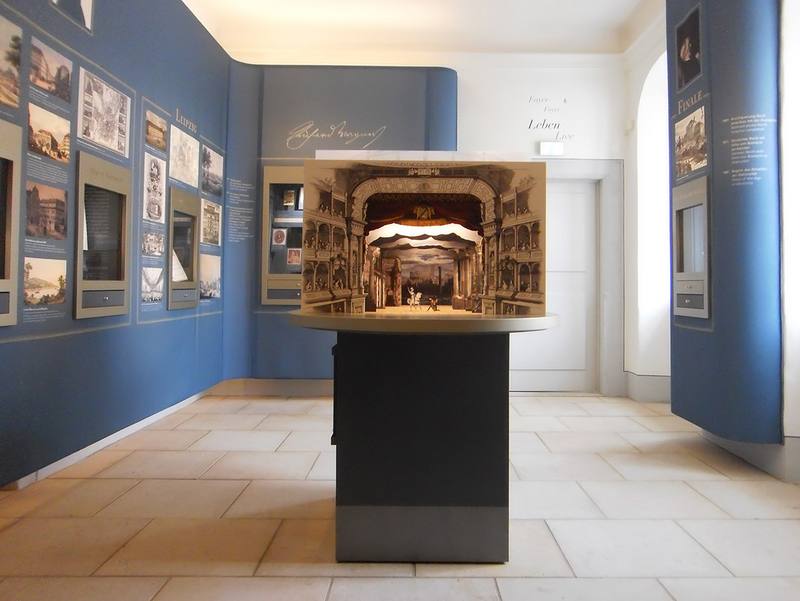
Museum multimedial – Inhalte in diesem Raum:
Dichtung
Die nächsten Räume widmen sich dem komplexen Entstehungsprozess Wagnerscher Opern. Es beginnt mit der Dichtung. Richard Wagner war Textdichter, Komponist, Regisseur, Orchestererneurer und Bauherr.
Im Zentrum des Raumes steht ein Bücherturm, der in Anlehnung an die „Dresdner Bibliothek“ – heute im Bayreuther Museum – Textbücher, Wagners Schriften, Literatur über ihn sowie die Quellen seiner Operntexte abbildet. Märchen- und Sagenbücher, sprachwissenschaftliche und philosophische Werke, Geschichts- und Rechtsbücher gehörten ebenso dazu wie Werke der Klassiker.
Gemütliche Sitzecken laden zum Verweilen und Schmökern ein. Und wer nicht selbst lesen möchte, hat an der Hörstation die Möglichkeit, sich in das Textuniversum der Wagner-Opern einzuarbeiten. Spezielle Motivkarten ermöglichen eine gezielte Themenauswahl, je nachdem, ob man eher an Liebe und Hass oder Fluch und Erlösung interessiert ist – Themen, die in Wagners Opern allgegenwärtig sind.
Museum multimedial – Inhalte in diesem Raum:
Kleines intimes Museum, das aus vielschichtiger Perspektive Wagner und Umfeld allen Interessierten nahebringt.
Komposition
In diesem Raum steht das Hörerlebnis im Mittelpunkt. Wie im Raum „Dichtung“ kann man sich thematisch entscheiden, Musik aus Wagners Opern entsprechend des gewählten Themenschwerpunktes zu hören. Daneben werden Musikbeispiele von Inspiratoren Wagners vorgestellt. Das Thema „Berlioz-Liszt-Wagner – gegenseitige Einflüsse“ erweist sich als ebenso spannend wie die Betrachtung der Einflüsse von Bellini, Weber, Marschner und Mendelssohn auf Wagner. Multimediaportale zu Aspekten der Kompositionstechnik führen den Besucher in die Geheimnisse von Wagners kreativen Methoden ein: Leitmotivtechnik, Vielfarbigkeit des Wagnerorchesters, Orchestervor- und -zwischenspiele als Handlungsträger und Gefühlswegweiser.
Spannend für Wagner- und Filmfans gleichermaßen sind ausgewählte Musikbeispiele zu Filmen, die bis in das Hollywood der 1930er Jahre zurückführen und den Einfluss Wagners aufzeigen.
Kinder finden in diesem Raum wieder einen speziell für sie gestalteten Informationspunkt. Hier wird gezeigt, wie Notenblätter in der Vergangenheit angefertigt wurden. Natürlich kann man dies als Anregung nutzen, sein eigenes Notenblatt mit der Hand anzufertigen.
Museum multimedial – Inhalte in diesem Raum:
Theater und Bühne
Technisch und optisch faszinierend ist das Holografietheater. Man kann unmittelbar den Sängerwettstreit der norwegischen Seeleute mit den Untoten des Geisterschiffes aus der Oper „Der fliegende Holländer“ erleben, beobachten, wie sich der im „Lohengrin“ in einen Schwan verwandelte Knabe Gottfried zurückverwandelt oder die Reise Wotans und Loges aus der Götterwelt ins Reich der Nibelungen aus „Rheingold“ verfolgen. Die Musik Wagners verbindet sich mit moderner Computeranimation. Wagner würde wohl ob der heutigen technischen Möglichkeiten erblassen. Seinerzeit galt er als Erneuerer des Bühnengeschehens, das er mit seinem Ideenreichtum revolutionierte.
Wagners Vorstellung von der Anordnung – insbesondere der optischen – bei Aufführungen von Bühnenwerken hatte nachhaltigen Einfluss auf die Bühnenpraxis. Die Kunst des effektvollen Szenenwechsels spielt eine Rolle, was direkt den Aufbau der Kompositionen beeinflusste. Figuren mussten nicht nur auf der Bühne stehen, sondern fliegen, schwimmen, unsichtbar werden, sich vor den Augen des Publikums verwandeln. Bühnenbilder hatten sich „wie durch Magie“ zu verändern.
Die Ausdehnung des Orchesters bei Wagner wirft fundamentale Theaterfragen auf: Balance zwischen Orchester und Sängern, räumliche Grenzen bei der Platzierung von Darstellern usw. Wie löste Wagner diese Fragen und wie werden sie heute gelöst? Was waren Wagners Regievorstellungen? Wagners Opernwerke bieten die Möglichkeit, anhand von Bühnenbildkonzeptionen den Wandel der Bühnentechnik exemplarisch zu demonstrieren.
Museum multimedial – Inhalte in diesem Raum:
Sie haben Fragen zu unserem Museum?
Damit Museumsbesuche bei uns ein besonderes Erlebnis wird, beantworten wir gern Ihre Fragen rund um unser Museum, die Dauer- oder Sonderausstellungen so wie die Veranstaltungen bei uns in den Richard-Wagner-Stätten Graupa. Mehr Informationen zu Tickets und Preisen finden Sie bei uns in den Besucherinformationen zusammengefasst.
Orchestergraben
Hier steht der Besucher selbst im Orchestergraben – mit Blick auf die Theaterbühne bzw. den Zuschauerraum. Der Komponist sammelte in seiner Dresdner Zeit Erfahrungen insbesondere als Dirigent, die er später bei der Konzeption des Bayreuther Festspielhauses einsetzen konnte. Der Besucher wählt zwischen verschiedenen Visualisierungsmodi, die das Geschehen im Graben plastisch darstellen. Die virtuelle Partitur erläutert die Motive.
Frauen, Freunde, Gönner, Weggefährten, Zöglinge und Kritiker Wagners füllen demgegenüber den Zuschauerraum – und laden den Besucher zum Platz- und damit Einnehmen der jeweiligen Perspektive sowie zum virtuellen Gespräch ein.
Museum multimedial – Inhalte in diesem Raum:
Wagner-Rezeption
Eine Wagner-Rezeption setzte bereits zu dessen Lebzeiten ein. Originaldokumente, Fotografien, eine Audiostation ermöglichen es, die Wagner-Rezeption verschiedener Zeiten zu erleben. Auch die Zeit des Nationalsozialismus und die Instrumentalisierung der Musik Wagners werden nicht ausgespart.
Nippsachen, kunstgewerbliche Gegenstände, selbst ein Kinderspiel zeigen auf, dass Richard Wagner in seinem Nachleben geschäftstüchtig benutzt wurde.
Ein Informationsturm im Zentrum des Raumes verweist auf die Städte, in denen sich heute noch weitere authentische, museal genutzte Aufenthaltsorte Wagners befinden – Eisenach, Leipzig, Tribschen bei Luzern sowie Bayreuth. Es ist eine Einladung, Wagners Spuren von Graupa aus weiter zu folgen.
Das Highlight ist der Saal im Jagdschloss, dort finden auch Konzerte, Lesungen und Hochzeiten statt.
Hier gibt es Wagner für die Augen und auf die Ohren.
Einmal selbst dirigieren – am virtuellen Orchestergraben wird es möglich. Interaktive Bildschirme verdeutlichen, wann welches Instrument für welchen Klang sorgt und wie sich dies in der Partitur widerspiegelt.
Technische und emotionale Höhepunkte der Präsentation sind ein Holografietheater und ein virtueller Orchestergraben, ergänzt durch Hörstationen.
